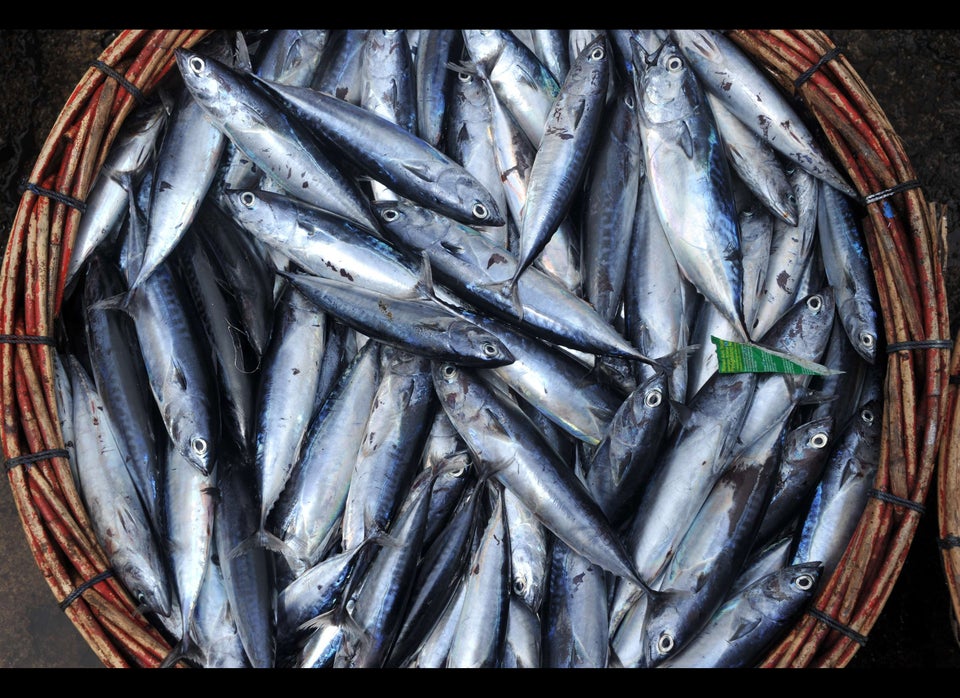
This article originally appeared on SmartMoney.com
Most consumers know to ignore emails alerting them to foreign lottery winnings and to steer clear of "designer" bags sold on street corners. But experts say even scam-savvy shoppers may be falling prey to fraud at a surprising place: the grocery store.
Food fraud -- the adulteration, dilution or mislabeling of goods stocked on the shelf -- is part of a growing trend of faux household goods . Although there is little data on the frequency of food fakery, experts say there's growing awareness of the problem. The lack of information on the subject recently prompted the U.S. Pharmacopeial Convention -- a nonprofit that sets standards used by the FDA -- to establish a Food Fraud Database. And a new study in the Journal of Food Science analyzed the top offenders identified by the database, including olive oil, milk and honey. "We're seeing similar trends in food to other items -- if it can be faked, it probably is," says Tara Steketee, the senior manager for brand protection at OpSec Security, an anti-counterfeiting consulting firm. "There are actually counterfeit tomatoes, believe it or not." (In that example, she says, garden-variety tomatoes get marketed as the more expensive heirloom ones.)
More on SmartMoney.com
10 Things Seafood Restaurants Won’t
4 Healthy Fast-Food Failures
The Surprising Secret Behind Doctor Referrals
The growing number of imported foods consumed by Americans makes it harder to identify the frauds, experts say. A recent FDA-commissioned Institute of Medicine study found the quantity of imported foods and drugs nearly tripled over the past 10 years. Currently, imports account for 85% of seafood, 39% of fruits and nuts and 18% of vegetables. That leads to great variety, but also increased risk from less rigorous food safety practices in other countries, says Clare Narrod, the risk analysis program manager for the University of Maryland's Joint Institute for Food Safety and Applied Nutrition, who served on the committee preparing the Institute of Medicine study. Criminals may also re-route a problem product through other countries in an attempt to evade U.S. bans.
Food is also one of the easier products to fake because the distinctions from the real deal are often subtle. "The biggest challenge with food products is that they're natural, and there's an infinite number of variation in natural products," says John Spink, associate director of the Anti-Counterfeiting and Product Protection Program at Michigan State University, who authored the new Journal of Food Science study. Criminals are counting on shoppers not tasting differences between wines, and not noticing that their supposedly wild salmon isn't quite as pink as it should be when cooked. As more cooks experiment with high-end olive oils, artisanal meats and heirloom produce, passing off a cheap ingredient as its fancier counterpart grows more profitable, too.
Avoiding fakes comes down largely to being an informed shopper and buying from trustworthy sources. Branded products tend to have more supply-chain safeguards, says Narrod. "It's their reputation on the line, so they have things in place," she says. It can also help to buy products with shorter supply chains which tend to be local or minimally processed, Spink says. And if the taste of an item seems off, or you get sick, it's worth alerting both the store and the local public health department.
Because they're ingested, fraudulent foods carry more significant health concerns than other fakes. Consumers with allergies could have a reaction, says Amy Kircher, associate director of the National Center for Food Protection and Defense. Some substituted items aren't meant for human consumption, and others contain toxic ingredients like lead or melamine.
Here are eight foods researchers say shoppers may unwittingly buy fraudulent versions of.
